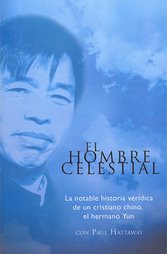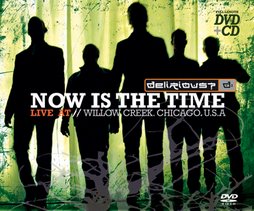Vi la pelicula ecuatoriana "que tan lejos" esta buenisima, una de mis favoritos, los paisajes excelentes, y el lenguaje!!
Sunday, December 28, 2008
Posted by
Ceci
at
8:00 AM
0
comments
![]()
Saturday, December 27, 2008
Se puede intentar hacer canciones
el hombre ha hecho tanto por el arte
se puede intentar romper paredes
y luego hacer casas gigantes
Y no llegue a aprenderte a amar
aunque quisiera yo no pude
cruze tus labios con mi boca
y te entregue mi cuerpo
cansada me detengo y pienso
si esto es lo que merecemos
hoy ya me voy amor
y deseare
que tengas un buen viaje
y no llorarè
porque ese dia que yo intente quererte
y le dije No a ser feliz porque solo
pensaba en ti
que yo aprenderìa a amarte como tu lo hacias
y debo decir adios.
Se que pude quedarme mas tiempo
pero algo me dijo que era tarde
y que aunque usara yo mi empeño
el final ya era inevitable
y duele porque fuiste todo lo que desee un dia
pero si no hay amor se que el deseo ya no bastarìa
sufriendo por todo el recuerdo
viviendo del remordimiento
hoy ya me voy amor
y deseare
que tengas un buen viaje
y no llorarè
porque ese dia que yo intente quererte
y le dije No a ser feliz porque solo
pensaba en ti
que yo aprenderìa a amarte como tu lo hacias
y debo decir adios.
Me duele que te dejo con la pena y el dolor
soñando que estes bien
y que des de tu vida lo mejor
como conmigo.
Posted by
Ceci
at
9:10 AM
0
comments
![]()
Ya solo basta con saberlo, te abrazarè y te besarè en mis sueños.
Posted by
Ceci
at
9:08 AM
0
comments
![]()
Mexico: Killings and abductions of women in Ciudad Juarez and the City of Chihuahua - the struggle for justice goes onAmnesty International welcomes the publication of the concluding report of the Federal Special Prosecutor's Office investigating the murders of women in Ciudad Juárez and the naming of a new Special Prosecutor, Alicia Elena Pérez Duarte, to lead the new national Special Prosecutor's Office for violent crimes against women.
The organization particularly welcomes the official recognition in this fourth report that there was systemic failure to prevent and punish many of the crimes against women in Ciudad Juárez, Chihuahua state, during many years.However, the organization has several concerns regarding the methodology and conclusions of Special Prosecutor's Office, which is part of the Office of the Attorney General of the Republic (Procuraduría General de la República, PGR). In particular, despite continuing high rates of violence against women and impunity in Ciudad Juárez, the PGR appears to downplay the scale of the crimes committed against women and suggests that a "perception different from reality" has been created about the crimes by those seeking to highlight the crimes and impunity.The basis for these conclusions is reportedly the technical legal (técnico-jurídico) review of the evidence contained in case files of the investigations undertaken by the local Chihuahua State Attorney General's Office since 1993.
However, this review has not largely involved full fresh investigations, with the re-interviewing of witnesses or gathering other new evidence. Nevertheless, as a result of this review, 177 state officials were found to have been possibly responsible for negligence or omission in the original investigations. However, none of these officials has been brought to justice by the state authorities as the statute of limitations has been applied in their favour. The PGR conclusions also appear to ignore the recommendations of international and national organizations, such as the government's own Special Commission for the Prevention and Eradication of Violence against Women in Ciudad Juárez, to ensure that the crimes are analysed from a gender perspective, in order to determine the role the victim's gender played in the motive and commission of the crime.The PGR appears to have concluded that only those crimes involving sexual violence -- approximately 20% of the 379 murders documented - amount to gender violence. Domestic violence appears not to be considered gender-based violence and also appears to be necessarily excluded from the category of sexual violence.
Other murders are classified as resulting from social violence, a concept which appears to necessarily exclude, without explanation, the gender of the victim as a factor in the murder. Another element not given proper consideration is the role played by the climate of violence against women and impunity which may have facilitated the commission of crimes.While Amnesty International welcomes the work of the PGR to review and systematize the case information, it has failed to transparently establish a gender sensitive methodology or facilitate access to case files in order that its work is open to impartial evaluation. As a result, the PGR review appears to have failed to overcome some of the deficiencies of the original investigations.The report also argues that Mexico's federal structure of government limits the PGR's legal capacity to directly investigate cases or hold state authorities to account. However, even in the 24 cases where the PGR assumed direct jurisdiction, the report makes no mention of advances in bringing the perpetrators to justice.
Furthermore, while Amnesty International recognises the restrictions of the national legal framework, these should not be used as an excuse to avoid responsibility as the Mexican State as a whole is responsible for enforcing its international human rights obligations. Above all, the situation is Ciudad Juárez remains serious with at least 28 murders of women reported last year and continuing high levels of impunity, particularly for past cases. The PGR has not reviewed the cases that occurred in Chihuahua City nor has there been a systematic judicial re-examination of the cases of those accused or convicted of murders who allege they were tortured into signing false confessions. In this final report the PGR does not refer in substance to these allegations of torture or ill-treatment, highlighting Mexico's longstanding failure to hold those responsible for such crimes accountable.Amnesty International has always maintained that the pattern of violence against women and impunity in Ciudad Juarez and Chihuahua City was of complex nature involving many different forms of crimes and perpetrators, with widespread institutional failings to prevent and punish those really responsible.
The families of the victims have struggled tirelessly for justice and it's through their efforts that national and international attention was finally drawn to the situation.BackgroundIn 2003 Amnesty International issued a report, Intolerable Killings: 10 years of abductions and murders of women in Ciudad Juarez and Chihuahua highlighting the pattern of killings and abductions of women in Ciudad Juárez and the City of Chihuahua. The report concluded that 370 women had been murdered in a variety of contexts, possibly a third of which indicted the sexual violence.
Many of the half the cases have still not resulted in the perpetrators being brought justice and doubt remains about the soundness of judicial procedures given allegations of torture. The long running campaign for justice by families of the victims has been crucial to the limited progress so far achieved.
Posted by
Ceci
at
8:39 AM
0
comments
![]()

www.bajojuarez.com
Vi el largometraje Bajo Juarez, y me impresionó mucho, les recomiendo a todos verlo.
En Ciudad Juárez, ciudad fronteriza al norte de México, frente a El Paso, en Texas, más de 300 mujeres han sido asesinadas de acuerdo a un ritual inmutable: secuestro, tortura, crueldades sexuales, mutilaciones, estrangulamiento. Desde hace diez años, a un ritmo promedio de dos cadáveres mensuales, se descubren en los suburbios de la ciudad, cuerpos de mujeres, adolescentes y niñas- desnudos, lastimados, desfigurados-. Los investigadores más serios piensan que se trata de la acción de dos "asesinos e serie", psicópatas, que siguen sin ser hallados.
Uno de los relatos más aterradores de la literatura contemporánea cuenta la historia de un vampiro que, en un campo de concentración, desangra uno tras otro a sus compañeros de infortunio. Esta horrorosa ficción se titula De entre los muertos y sus autores, Gadner Dozois y Jack Dann, pelearon duro para publicarla en Estados Unidos en 1982, porque ninguna revista de ciencia ficción se atrevía a ofrecérsela a sus lectores. Era de una imaginación demasiado malsana y excesivamente atroz.
Si este relato de vampiros nos resulta chocante es, sin duda, porque vivimos en un mundo más o menos normal donde tales horrores no suceden con frecuencia. En cambio la historia nos parecería banal si viviéramos en un mundo donde se aceptaran los peores crímenes como por ejemplo, secuestrar, violar, torturar, matar. Un mundo donde los policías protegieran a los asesinos, fueran sus cómplices, festejaran el acusar a inocentes y amenazaran, e incluso eliminaran a cualquier investigador. Un mundo al revés, donde las autoridades cerraran los ojos, los criminales estuvieran libres y los inocentes martirizados. En resumen, una pesadilla. Salvo por un detalle: ese mundo de horror existe verdaderamente y forma parte de la realidad de México. Y es tan verdadero como las víctimas, las pruebas y los testimonios que he acumulado durante muchos años.
La escena de uno de los misterios criminales más pasmosos de todos los tiempos se llama Ciudad Juárez, en el Estado de Chihuahua, junto a la frontera con Estados Unidos. Su población, de 1.300.000 habitantes, es rehén de asesinos sin rostro. Lo que allí ocurre es un insulto a los derechos humanos. Más de 300 mujeres han sido secuestradas, violadas y asesinadas desde 1993. La mayoría de ellas tenía características comunes: al menos un centenar provenía de un ambiente pobre, casi todas eran obreras, todas eran menudas, morenas y tenían cabello largo. Gran parte de ellas no pudieron ser identificadas, todas fueron víctimas de violencia sexual y, sin ninguna excepción, murieron estranguladas.
Algunos cadáveres fueron encontrados en barrios del centro de la ciudad, otros descubiertos en terrenos baldíos de los suburbios, pero hay un dato seguro: todas fueron asesinadas en otro lugar, después de haber estado secuestradas durante semanas. El modus operando de los asesinatos es idéntico al de los asesinos en serie. Los homicidios se repiten y se parecen; las crueldades son las mismas y afectan no solo a mujeres adultas sino también a adolescentes, e incluso a niñas de apenas 10 o 12 años.

Para las mujeres, Ciudad Juárez se ha convertido en el lugar más peligroso del mundo. En ningún lado, ni siquiera en Estados Unidos donde los serial killer son legión, las mujeres están tan amenazadas. En el resto de México, de cada diez víctimas de asesinato sólo una es mujer. En Ciudad Juárez, de cada diez personas asesinadas cuatro son mujeres… Y no parece que la serie de crímenes vaya a detenerse porque, según las Naciones Unidas, la tasa de impunidad en México es casi total.
Solo existe un arma para combatir semejante flagelo: la memoria, el testimonio. Nunca me he sentido tan trastornado como al acudir a los lugares donde se descubrieron los cadáveres. Era como una cuarta dimensión, una sensación de espanto a mitad de camino entre la realidad y la alucinación.
Esther Chávez Cano, directora de una asociación contra la violencia doméstica, piensa que los asesinatos van a seguir, ya que la incompetencia de las autoridades es evidente. Sin embargo, la policía detuvo a un individuo cuyo nombre es Jesús Manuel Guardado, alias "El Tolteca", así como a la banda de "Los Choferes", acusados de ser los asesinos. Pero estas detenciones no han modificado la convicción de Chávez: "Es un señuelo. No cambia en nada la situación, los crímenes van a continuar, como después de la detención de la banda de "Los Rebeldes". En ese momento nos dijeron que los asesinos eran ellos. Y creímos que habíamos terminado con la pesadilla. Pero vea, seguimos encontrando cadáveres de mujeres violadas, torturadas…"
Según Chávez, esta situación s una repetición de la de 1995, cuando la policía detuvo a un químico de origen egipcio, Abdel Latif Sharif Sharif, acusándolo de los crímenes. Poco después capturó a una banda de jóvenes granujas, "Los Rebeldes", supuestos cómplices de Sharif Sharif.
Sharif Sharif sigue detenido en el pabellón de aislamiento de la prisión de alta seguridad de Chihuahua, la capital del Estado. Acusado de asesinar a una adolescente, Elisabeth Castro García, Fue condenado a treinta años de reclusión al término de un proceso lleno de irregularidades y en vías de revisión. En cuanto a sus vínculos con "Los Rebeldes", las autoridades no llegaron a establecerlos nunca.
En 1999, utilizando el teléfono de la prisión, Sharif Sharif se arriesgó a interpelar al procurador general que participaba, en directo, en un programa de televisión. Clamó su inocencia, afirmó su certidumbre de no ser más que un "chivo expiatorio" y colocó al procurador ante el desafío de someterlo al detector de mentiras. Furiosas, las autoridades incomunicaron al egipcio. Su abogada, Irene Blanco, fue amenazada de muerte, pero no se dejó intimidar. Su hijo, Eduardo, fue objeto de un atentado y sobrevivió por milagro. Blanco debió abandonar la defensa de Sharif Sharif y se fue de la ciudad…

Según el criminólogo Oscar Máynez, al menos 60 asesinatos cometidos entre 1993 y 1999 fueron concebidos "según el mismo modelo". Considera que se trata de asesinatos perpetrados por dos "asesinos en serie" diferentes. En 1998, el célebre super-detective estadounidense Robert K. Ressler, as del FBI, inventor de la expresión "serial killer" y de la técnica del "perfilado" de los asesinos en serie, y consejero experto de la película El silencio de los corderos de Jonathan Demme, fue a Ciudad Juárez para investigar esos 300 crímenes. En su informe Ressler afirma que la mayoría de los asesinatos de mujeres es obra de dos serial killer que, según él, no serían mexicanos sino, más probablemente, españoles… o chicanos de Estados Unidos. En 1999, una de las más grandes expertas mundiales en criminología, Candice Skrapec, de la Universidad de California, coincidió en que alrededor de 90 asesinatos seguramente habían sido cometidos por uno o dos asesinos en serie. Pensaba que uno de los autores podía ser Ángel Matutino Resendez, el famoso "asesino de ferrocarriles" ¿Por qué los cadáveres son desfigurados y mutilados? ¿Por qué un tal ensañamiento con las víctimas, un sadismo tan bárbaro? ¿Se trata de rituales satánicos? ¿De orgías perversas de narcotraficantes? ¿De vendedores de órganos? ¿De sacrificios humanos para el rodaje de filmes-realidad (snuff movies) en los cuales la víctima es violada, torturada y asesinada ante la cámara? Las preguntas se suceden hasta el infinito sin que ninguna investigación seria pueda darles respuesta.
Diversos testimonios indican que los asesinos habrían estado protegidos, en un primer momento, por los policías de Chihuahua. Luego se habrían beneficiado del apoyo de algunos ámbitos de poder vinculados con el tráfico de drogas.A finales de 1999 se encontraron cadáveres de mujeres y niñas cerca de ranchos pertenecientes a traficantes de cocaína. Esta coincidencia parece establecer un vínculo entre los homicidas y la mafia de los traficantes, a su vez relacionada con la policía y los militares. Pero las autoridades se niegan a orientar la investigación por esa vía.
La Comisión Mexicana de Derechos Humanos (CMDH) ha emitido desde 1998 recomendaciones sobre estos centenares de asesinatos de mujeres, a los cuales el Estado ha prestado poca atención. Entre los sospechosos se reitera un nombre, el de Alejandro Máynez, quien habría formado parte de una banda de criminales, encubridores y traficantes de drogas y de joyas, y que también sería miembro de una rica familia propietaria de locales nocturnos. Nunca ha sido importunado.Máynez, lo mismo que otros sospechosos, estaba entre 1992 y 1998 bajo la protección del gobernador del Estado de Chihuahua, Francisco Barrio Terrazas, del Partido Acción Nacional (PAN). Durante su mandato, los asesinatos de mujeres se multiplicaron y se agregaron a la violencia habitual de este Estado, el más violento de México. En esa época, Bario Terrazas declaró que esos asesinatos no tenían nada de sorprendente porque las víctimas se paseaban por lugares oscuros y llevaban minifaldas u otras ropas provocativas. A pesar de eso, el presidente Fox, elegido para esa función en diciembre de 2000 como candidato del PAN, nombró a Barrio Terrazas en el Ministerio de la Función Pública del control de cuentas, cuya misión es "combatir la corrupción y hacer transparente la gestión de la administración pública". Ciudad Juárez se caracteriza por sus numerosas fábricas "maquiladoras", donde mano de obra barata ensambla productos destinados a la exportación. Esta mano de obra, que proviene principalmente del interior del país, está compuesta sobre todo de mujeres. Son ellas las que permiten vivir a las familias, algo que perturba las tradiciones machistas y patriarcales. Sumergiéndose en el trabajo, las mujeres tratan de evadirse de la pobreza.La mayoría de las víctimas eran obreras, y fueron sorprendidas mientras iban a su trabajo o retornaban a su casa. En los suburbios, las esperaban bandas de delincuentes y toxicómanos.
Desde los años veinte, la ciudad registra un incremento en las distracciones nocturnas y en el turismo. Aquí fue donde se creó, en 1942, el famoso cóctel "margarita". Las inmediaciones del viejo puente internacional están enteramente dedicadas al placer: juegos, sexo y alcohol. Esta atmósfera, donde los altavoces de los automóviles aúllan canciones estadounidenses que se mezclan con el rock heavy metal, el rap o la música tecno, alienta el consumo de estupefacientes. Y al parecer esto empuja al crimen. Pues la ola de homicidios ha generado una suerte de emulación misógina y ha transformado esas matanzas esporádicas en una verdadera obsesión criminal: individuos que acechan en la oscuridad y cometen asesinatos por un puro deseo de imitación. Es el reino de los brutos, los perversos, los psicópatas. Muchos jóvenes "machos" creen que la violencia contra las mujeres es un deber. Merodean en auto durante la noche, en busca de una presa.Hester van Nierop, una estudiante holandesa de 18 años, fue secuestrada el 20 de septiembre de 1998. Doce horas más tarde se encontró su cadáver bajo la cama de una habitación del hotel Plaza. Había sido violada, torturada y estrangulada.
Lilia Alejandra García Andrade, de 17 años y madre de dos niños, desapareció el 14 de febrero de 2001 al salir de la fábrica. Su cadáver fue encontrado siete días más tarde en un terreno baldío frente al centro comercial Plaza Juárez. Estaba semidesnuda y envuelta en una manta. La autopsia reveló que la adolescente había sido asesinada el 19 de febrero. Antes de ser estrangulada había sido violada, torturada y mutilada durante cinco días…
Violeta Mabel Alvidrez Barrio, de 18 años, fue secuestrada el 4 de febrero de 2003. Su cadáver se encontró, junto con el de otras dos adolescentes de 16 y 17 años, quince días después. Pero su muerte se remontaba sólo a tres o cuatro días, lo que quiere decir que había estado a merced de verdugos sádicos y psicópatas durante más de diez días.El procurador de la República considera que todos estos homicidios son delitos comunes o vinculados, tal vez, con el tráfico de órganos. Hace dos años, un diputado de Ciudad Juárez me confió, preocupado: "No me sorprendería que el gobernador haya dado a un grupo de la policía judicial la orden de que se encarguen de ocultar estos asesinatos de mujeres". Hacía alusión al actual gobernador, Patricio Martínez, del Partido revolucionario Institucional (PRI) quien, en enero de 2001, había sido él mismo víctima de un atentado, y había acusado a la mafia local. La mujer que trató de matarlo era ex funcionaria de la policía judicial.María Sáenz del Comité de Chihuahua Pro Derechos Humanos, me hizo la siguiente observación: antes de 2001, siempre se ubicaban los cadáveres de las víctimas violadas y estranguladas, pero desde que se multiplicaron las investigaciones los cuerpos desaparecen pura y simplemente. Las asociaciones han registrado cerca de 500 desaparecidas, mientras que los cadáveres encontrados superan apenas los 300.
Hacer desaparecer los cuerpos de las mujeres asesinadas se ha vuelto una especialidad de la mafia local. El procedimiento usual se denomina "lechada": un líquido corrosivo, compuesto de cal viva y de ácidos, disuelve rápidamente la carne y los huesos sin dejar la menor huella. "Ninguna huella", tal es la consigna secreta. Reducir a nada, borrar, suprimir, son las palabras claves.Los cuerpos desnudos de tres mujeres jóvenes fueron descubiertos el 6 de noviembre de 2001 en un campo de algodón en la periferia de la ciudad. Una de ellas era menor de edad, tenía las manos atadas en la espalda y había sido degollada. La día siguiente, al ampliar la búsqueda, se descubrieron otras cinco víctimas. Urgida de encontrar culpables, la policía de Chihuahua detuvo a dos individuos que, bajo tortura, confesaron ser los culpables de ocho crímenes. El procurador, Arturo González Rascón, Anunció que el asunto estaba resuelto. Sin que se llevara a cabo ninguna investigación real, sometió a los inculpados a un procedimiento penal. El 14 de noviembre, despreciando todas las reglas del derecho y bajo la presión de la calle, un juez cómplice de las autoridades locales emitió un mandato de prisión. Entre el descubrimiento de los cadáveres y el acto judicial apenas había transcurrido una semana. Durante ese tiempo los verdaderos culpables seguían en libertad.Así, la serie negra continuó. Ese mismo día 14 de noviembre, fueron encontrados otros dos cadáveres de jóvenes: uno en el Motel Royal, el otro en el pueblo de Guerrero. Cinco días más tarde se descubrían en los suburbios de la ciudad el cuerpo semidesnudo de otra mujer de 21 años, Alma Nelly Osorio Bejarano, torturada y estrangulada.No existe ningún registro que permita establecer un archivo de los cientos de crímenes de mujeres cometidos en Ciudad Juárez. Las autoridades tienen la costumbre de abandonar muy rápidamente las investigaciones: algo de más de tres meses después del descubrimiento de los cadáveres de las 8 mujeres en un campo de algodón, algunos paseantes encontraron vestimentas y objetos pertenecientes a las víctimas, lo que revela el increíble descaro de los policías. El gobernador Patricio Martínez deploró la inacción de su antecesor Francisco Barrio Terrazas, que sólo dejó "bolsas de huesos" y "algún expediente sobre los asesinatos". ¿Pero acaso él hizo algo mejor?Las autoridades pretenden que entre 1992 y 1998 fueron "resueltos" doce casos de "asesinatos en serie de mujeres" y 99 casos de 2crímenes comunes" (pasionales, sexuales, familiares, venganza y arreglo de cuentas, vinculados al tráfico de drogas, cometidos en ocasión de robos, de riñas, o por motivos desconocidos). Entre octubre de 1998 y febrero de 2002 se cometieron 20 "asesinatos en serie de mujeres" y 71 "asesinatos comunes". De los primeros, 15 estarían prácticamente resueltos" y 5 están en curso de investigación: de los segundos, 53 habrían sido "elucidados" y 18 "están a punto de serlo". ¿Pero son creíbles las autoridades? Es preciso recordar que las expresiones "asesinatos resueltos" o "en vías de resolución" son engaños pues sólo se trata de interpelaciones a personas "investigadas".
La estrategia de los distintos gobernadores para "resolver" los asesinatos en serie de mujeres en Ciudad Juárez ha llevado a un conjunto de manipulaciones y disimulos consistentes en inculpar a inocentes, como ocurrió con los dos acusados de los 8 asesinados del 6 de noviembre de 2001.Otro método utilizado por las autoridades es hacer asesinar a quienes se hacen cargo de la defensa de los falsos culpables. El abogado Mario César Escobedo Anaya fue asesinado por un comando que admitió los hechos y, sin embargo, fue liberado con el pretexto de que "defendía" a agentes de la policía judicial del Estado de Chihuahua, cuyo jefe, el comandante Alejandro Castro Valles, tenía la costumbre de detener sin mandato judicial y de torturar inocentes.Abogados, jueces, procuradores y periodistas recibieron amenazas de muerte para disuadirlos de proseguir sus investigaciones sobre los homicidios de mujeres. Algunos opositores al gobernador Patricio Martínez también fueron amenazados con el fin de acabar con sus protestas: las militantes Esther Chávez Cano y Victoria Caraveo, y el criminólogo Oscar Máynez.En los asesinatos en serie de Ciudad Juárez se mezclan la atmósfera turbia de la frontera y sus miles de migrantes, las maquiladoras, el quebranto de las instituciones, y también la violencia patriarcal, la desigualdad, la negligencia del gobierno federal, etc. Pero, por encima de todo, este tenebroso asunto revela el gran poder de los narcotraficantes y la solidez de sus redes de influencia. Los vínculos entre el ambiente criminal y los poderes económico y político constituyen una amenaza para todo México.Los documentos y los testimonios de que dispongo son demoledores para las autoridades. Prueban que algunos homicidios de mujeres fueron cometidos, durante orgías sexuales, por uno o varios grupos de individuos, entre los cuales hay asesinos protegidos por funcionarios de los diferentes cuerpos policiales, en complicidad con personas en posiciones importantes. Estas personas se encuentran a la cabeza de fortunas adquiridas con gran frecuencia de manera ilegal, gracias a la droga y el contrabando, cuya red de influencia se extiende como un pulpo para todo el país. Por eso estos crímenes odiosos gozan de semejante impunidad.Según fuentes federales, seis grandes empresarios de El Paso, de Texas, de Ciudad Juárez y de Tijuana comandarían a sicarios encargados de secuestrar mujeres y de llevárselas para violarlas, mutilarlas y matarlas.
El perfil criminológico de esos asesinatos se acercarían a lo que Robert K. Ressler llamó "asesinatos por diversión" (spree murders). Las autoridades mexicanas estarían enteradas desde hace tiempo de estas actividades y se habrían negado a intervenir. Estos ricos empresarios estarían cerca de algunos amigos del presidente Vicente Fox y habrían contribuido al financiamiento oculto de la campaña electoral que le permitió a Fox ser elegido presidente, y a Francisco Barrio Terrazas, ex gobernador de Chihuahua, llegar a ser ministro. Esto explicaría por qué ningún culpable verdadero ha sido hostigado nunca por esos 300 asesinatos en serie.Y los homicidios continúan. En este mismo instante, una mujer puede estar a punto de morir torturada en Ciudad Juárez.
Sergio Gónzalez RodríguezLe Monde Diplomatique edición españolaNº 94 agosto 2003
Posted by
Ceci
at
7:27 AM
0
comments
![]()
Friday, December 19, 2008
David Rubio Paniagua: GRACIAS POR TU AMISTAD.
Tu tambien eres uno de mis mejores amigos y haces una diferencia cuando estas!!!
Que tengas mucho exito en tu vida personal, con tu novia, en tu trabajo y en todo lo que emprendas
Un abrazo, amigo
Posted by
Ceci
at
6:47 PM
0
comments
![]()
Saturday, December 06, 2008
Aqui pase 12 meses de mi vida, increibles.
Camberley is a town in Surrey, England, situated 31 miles (50 km) south west of central London, in the corridor between the M3 and M4 motorways. The town lies close to the borders of both Hampshire and Berkshire; the boundaries intersect on the western edge of the town where all three counties converge.
Camberley's suburbs include Crawley Hill, Heatherside, Yorktown, Old Dean and Frimley Road district.
The town has a population of 30,155,[2] whilst the Aldershot Urban Area (which also includes other towns, such as Aldershot, Farnborough, and Farnham) has a population of 243,344, making it the thirtieth-largest urban area in the UK.[2]
[edit] History
A settlement which became known as Yorktown grew up around the gates of the Royal Military College at Sandhurst in the 19th century. The college was renamed in 1947 the Royal Military Academy Sandhurst.[3]
During the 19th century, Camberley grew in size. This was given added impetus with the arrival of the branch-line railway (the main-line passes through nearby Deepcut but there is no stop).
Later, the Staff College was established to the east of the Academy, and a property speculator built the nearby Cambridge Hotel. The surrounding area became known as Cambridge Town, but was renamed "Camberley" in 1877 to avoid confusion with Cambridge in Cambridgeshire.
Camberley was mentioned in the black-and-white film Lord of the Flies, loosely based on the William Golding novel. In this, the character Piggy correctly states that Camberley was formerly known as Cambridgetown,[4] but changed its name following confusion with the town of Cambridge. He claims that the new name consisted of three parts; "Cam" taken from the original name of Cambridgetown, "ber" taken from the name of a nearby river (in fact there is no such river), and "ley" because it is a common ending for English town names (as in neighbouring Frimley). One would imagine this reference came from the child actor who played Piggy himself, Hugh Edwards, who left Camberley Primary School - long since demolished to make way for a town centre redevelopment - to star in the film.
Camberley grew to become the largest town in the area, and Yorktown is now almost regarded as part of Camberley.
[edit] Geography
The smaller town of Frimley, being so close to Camberley, is often thought to be a part of the town by many visitors to the area, although the two are, for the most part, clearly separated by the M3 motorway. Frimley has its own town centre, a major regional hospital (Frimley Park) and extensive suburban areas. In the 19th century, Yorktown and Camberley were in the Ecclesiastical Parish of Frimley. The neighbouring town of Blackwater, 3 km (2 miles) to the west is also considered by some to be a suburb of Camberley, however, it is actually situated in the Hart District of Hampshire.
[edit] Economy
Most of Camberley's town centre is host to The Mall shopping centre, built around the Main Square. This is a late 1980s development anchored by stores such as House of Fraser and Woolworths. The most memorable feature of the Main Square in Camberley is the large clock found in the centre of the complex which also houses a lift up to a café which is opposite a Primark store. The High Street has a number of shops as well as bars and clubs, many of the latter being more recent additions. There are a number of secondary shopping streets including Park Street, Princess Way and parts of London Road.
After much debate and delay (plans having been discussed for over half a decade), construction started in May 2006 on a new seven acre mixed-use development west of Park Street. Named 'The Atrium', the new development will include residential, leisure and retail facilities, as well as a 900 space car park. There will be 217 'design-led' apartments divided into three areas within the complex (named Centro, Aspect and Courtyard). Fourteen new retail units will face directly onto Park Street, opposite the Main Square shopping centre. The intention is to pedestrianise and landscape Park Street for the new development. Leisure facilities are to include a nine-screen cinema, bowling alley, a health and fitness club, cafés and restaurants. Various elements of The Atrium will be opening during 2008, with the final elements, the main cinema and bowling Alley, opening in October and November respectively.[5]
Major employers include Sun Microsystems, whose UK headquarters are located just across the Hampshire border in Minley next to the M3 motorway at junction 4a.
[edit] Present day
The Old Dean is a housing estate on the outskirts of Camberley, most of which was built in the 1950s on the "Old Dean Common" for residents of heavily bombed Surrey-area's homeless after World War II. Many of the roads on that half of the Old Dean are named after those areas (the others are named after places on the common). There is a recent development which has expanded the Old Dean and provides more affordable housing. The Old Dean is home to Camberley's largest educational institute - Collingwood College.
Camberley and the Royal Military Academy Sandhurst are featured in a Doctor Who comic story entitled "The Warkeeper's Crown".
Camberley has a theatre and a football club.
The town has its own public library, theatre (Camberley Theatre) and is home to the Surrey Heath Borough Council offices. The town's only cinema, owned by Robin's Cinemas, and situated on London Road some distance from the town centre, closed in 2003 and was recently burnt down in 2007. The Arena, a sports/leisure centre and pool facility, is found nearby.
[edit] Transport
Camberley railway station is situated south of the town centre on the Ascot to Guildford line. It is connected to London Waterloo, Guildford and Ascot by South West Trains. Nearby Blackwater station (situated perpendicular to the A30 on the border of Hampshire, Surrey and Berkshire) on the North Downs Line has direct services to Reading, Gatwick Airport and, again, Guildford.
The town is served by the following main bus routes:
First Berkshire & The Thames Valley: 194
Arriva Guildford & West Surrey: 35 & 34
Stagecoach in Hampshire: 200
Stagecoach in Hants & Surrey: 1, 2 & 3
Dicksons Travel: 500 & 501
Camberley can be reached by the A30 and lies between Junction 3 and Junction 4 of the M3 motorway.
There are two small airports nearby Farnborough Airfield at Farnborough and Blackbushe Airport near Yateley. Farnborough Airfield is well-known for its International Air Show. Heathrow is 30 km (19 miles) away.
The A30 leaving Camberley to the north for Bagshot has the large roundabout on it called the american golf discount.
[edit] Education
There are a number of schools in Camberley. Collingwood College is famous for being one of the largest in Surrey with over 2000 pupils. Kings International College (formerly France Hill School) is also situated in Camberley. Other schools include Tomlinscote School and Sixth Form College, Lyndhurst School[6] founded in 1895 and one of only a few day preparatory schools with an unbroken history of over one hundred years, Lyndhurst School Day Nursery,[7] Lakeside Primary School, Watchetts Junior School,[8] Crawley Ridge Junior School,[9] Bristow First Infants School,[10] Lorraine Infant School and Nursery,[11] Cordwalles Junior School,[12] The Grove Primary School and St. Augustines Primary School.
The nearest universities are Royal Holloway, University of London which is situated 18 km (11 miles) east of Camberley in Egham, with the University of Surrey (at Guildford) and the University of Reading both being 25 km (16 miles) to the southeast and northwest respectively.
[edit] Sport
Camberley and Farnborough Hockey Club[13] play men and women's field hockey at Kings International College and draw many players from the region.
Camberley Town football club currently play in the Premier division of the Combined Counties League. They play at Krooner Park, Wilton Road.
Camberley rugby football club play in the Powergen London League division 4 South West. They play at the Watchetts recreation ground, Park Road.
Camberley cricket club play in the Surrey Championship division 2. Their ground is in Upper Verran Road.
Camberley Lawn Tennis Club[14] has five courts at Southcote Park on Portsmouth Road. There is an active junior section and regular coaching sessions.
Frimley Lawn Tennis Club offer social and competitive tennis. They play at the Watchetts recreation ground in Camberley. Mens, ladies and mixed teams play all year in the Aldershot and District LTA League.
Camberley Chess Club plays at the Camberley Baptist Church Hall, Frimley Road, Camberley, GU15 3EN. The club meets every Tuesday evening from 7.30 pm. They are 2007 - 8 Berkshire League champions. They also compete in several divisions of the Surrey Border League.
I LOVE CAMBERLEY
Posted by
Ceci
at
8:19 AM
0
comments
![]()
Monday, November 17, 2008
Sunday, November 09, 2008
Saturday, November 08, 2008
Sunday, October 05, 2008
Amo toda tu figura, modelo de lo increible
belleza y vitud en una
tu soltura al perdonar
no dejas morir a nadie
y vas sembrandonos ilusiones
tu no sabes lo que causas
creo que aun no te has dado cuenta
haces que la gente agradezca tu existencia
TE AMO mas que a un nuevo mundo
mas que a un dia perfecto
mas que a un suave vino
mas que a un largo sueño
mas que a la balada de un niño cantando
mas que a mi musica mas que a mis años
mas que a mis tristezas mas que a mis quehaceres
mas que a mis impulsos mas que a mis placeres
mas que nuestro juego preferido
mas aun que esto te amo
Amo toda tu persona, para volar en la vida
poderosa cenicienta, tu destreza para amarnos
no olvidas dolor de nadie, y te desvives por alegrarnos
no has notado lo que eres
y me aterra que lo notes
haces que las rosas se pelen por ser tu broche
Te amo.
Mas que a un largo viaje
mas que a un rubio campo
mas que a un viejo amigo
mas que cualkier santo
mas que tu pureza adornada de flores
mas que a tu tenacidad que no se rompe
mas que a tu alegria mas que a tus colores
mas que a tu sensualidad que crees que escondes
mas que a nuestro beso primero,
mas aun que esto te amo
mas que a nuestro beso primero
mas aun que esto te amo
mas que a nuestro beso primero
mas aun que esto te amo mas que nuestra magica noche de bodas
mas aun que esto te amo.
Te amo
Posted by
Ceci
at
7:50 PM
1 comments
![]()
Sunday, September 21, 2008
http://www.youtube.com/watch?v=WS_BpR4KZfM
http://www.youtube.com/watch?v=IFIQfb6pbpg
Posted by
Ceci
at
5:27 PM
0
comments
![]()
Tuesday, September 16, 2008
17 de Octubre Concierto de Jesus Adrian Romero en CIECEM toluca Estado de Mexico.
Posted by
Ceci
at
2:16 PM
0
comments
![]()
Wednesday, September 03, 2008
Imaginate La Academia britanica y buscando ser estrellas de Opera....
Operatunity... sensacional.
I love it
Posted by
Ceci
at
6:32 PM
0
comments
![]()
Wednesday, August 27, 2008
Un vicio caro es el amor
El humo es espeso... no me deja ver, no creo que ya vaya a volver.
Posted by
Ceci
at
5:52 PM
0
comments
![]()
Me dedicaron esta cancion de liquids, esta muy padre, me gusta mucho el ritmo y las voces!!!
Se llama "desde que".
Te sentì venir como en una visiòn, ya estas aqui y mi mente explotò. desde que tu estas conmigo todo brilla con otro color. Desde Que.
Volemos tu y yo en esta inmensidad, no hay droga mejor que tus brazos estar.
Desde que tu estas conmigo veo que ahora brilla mas el sol, desde que estoy contigo no se que paso, que te di mi corazon.
Y ahora voy caminando junto a ti, somos dos, nunca sola vas a ir. y ahora voy sonriendo junto a ti, somos dos juntos vamos a vivir.
Voy pensando en ti, cuando lejos estoy, hoy pensaste en mi y mi mente exploto. desde que estas conmigo la musica tiene otro sabor.
Posted by
Ceci
at
5:35 PM
0
comments
![]()
Una de mis canciones favoritas,
Yo se que aun no me conoces,
que soy un poco timido al buscarte,
que alguna vez me viste
que hasta me sonreiste
pero talvez fue solo un gesto amable
Yo sueño con que alguna vez me quieras
por descubrir de cerca tu mirada
que sientas mi pasiòn
que salgas al balcòn
la noche que te lleve serenata
por eso rezo
que tu de mi te enamores
rezo,
y que mi vida decores
con tus gustos tus colores
rezo.
Hoy rezo
para que ya no sea un sueño,
rezo o algun ridiculo empeño
por poderte dar un beso rezo.
Yo sufro cuando no se que decirte
cuando de mi se esconden las palabras
y espero con paciencia
que adviertas mi presencia
y pido a Dios que pronto tu me ames
por eso rezo
que tu de mi te enamores
rezo,
y que mi vida decores
con tus gustos tus colores
rezo.
Hoy rezo
para que ya no sea un sueño,
rezo o algun ridiculo empeño
por poderte dar un beso rezo.
Posted by
Ceci
at
5:27 PM
0
comments
![]()
Sunday, August 24, 2008
Saturday, August 23, 2008

Lucha libre (Spanish for "free fight") is a term used in Mexico and other Spanish-speaking areas to refer to a certain form of professional wrestling involving varied techniques and moves. Outside of these areas, the term is synonymous with the professional wrestling performed in Mexico and other Latin American countries.
Mexican wrestling is characterized by rapid sequences of holds and moves, as well as spectacular high-flying moves, many of which have been adopted in the United States, and colorful masks. Lucha libre performers are known as luchadores (singular luchador).
In 1942, lucha libre would be forever changed when a silver-masked wrestler, known simply as El Santo (The Saint), first stepped into the ring. He made his debut in Mexico City by winning an 8-man battle royal. The public became enamored by the mystique and secrecy of Santo's personality and he quickly became the most popular luchador in Mexico. His wrestling career spanned nearly five decades, during which he became a folk hero and a symbol of justice for the common man through his appearances in comic books and movies, while the sport of Lucha Libre received an unparalleled degree of mainstream attention.[2]
Other legendary luchadores who helped popularize the sport include; Gory Guerrero who is credited with developing moves and holds which are now commonplace in professional wrestling; Blue Demon, a contemporary of Santo and possibly his greatest rival; and Mil Máscaras (A Thousand Masks) who is credited with introducing the high flying moves of lucha libre to audiences around the world. He achieved international fame as one of the first high-flyers, something he was not considered in Mexico where he fell under the mat-power category.[3][4][5]
Lucha libre style of wrestling
Rey Mysterio hitting the "619" on Eddie GuerreroLuchadores are traditionally more agile and perform more aerial maneuvers than professional wrestlers in the U.S. who, more often, rely on power moves and strikes to subdue their opponents. The difference in styles is due to the independent evolution of the sport in Mexico beginning in the 1930s and the fact that luchadores in the cruiserweight division (peso semicompleto) are often the most popular wrestlers in Mexican lucha libre.[6] Luchadores execute high flying moves characteristic of lucha libre by utilizing the wrestling ring's ropes to catapult themselves towards their opponents, using intricate combinations in rapid-fire succession, and applying complex submission holds. Lucha libre has several different weight classes, many catered to smaller agile fighters, who often make their debuts in their mid-teens. This system enables dynamic high-flying luchadores such as Rey Mysterio, Jr., Juventud Guerrera and Mistico, to develop years of experience by their mid-twenties.[7] A number of prominent Japanese wrestlers also started their careers training in Mexican lucha libre before becoming stars in Japan. These include Gran Hamada, Satoru Sayama, Jushin Liger, and Último Dragón. With so many weight classes, Mexico has the largest number of professional wrestlers in the world.
A lucha libre tag team matchLucha libre is also known for its tag team wrestling matches. The teams are often made up of three members, instead of two as is common in the U.S. These three man teams participate in what are called trios matches, for tag team championship belts. Of these three members, one member is designated the captain. A successful fall in a trios match can be achieved by either pinning the captain of the opposing team or by pinning both of the other members. A referee can also stop the match because of "excess punishment". He can then award the match to the aggressors. Falls often occur simultaneously, which adds to the extremely stylized nature of the action. In addition, a wrestler can opt to roll out of the ring in lieu of tagging a partner or simply be knocked out of the ring, at which point one of his partners may enter. As a result, the tag team formula that U.S. tag matches tend to follow doesn't apply to lucha libre because the race to tag isn't a priority. There are also two-man tag matches (parejas) as well as "four on four" matches (atomicos).[8]
Masks
The mask of Blue DemonMasks (mascaras) have been used dating back to the beginnings of lucha libre and have a historical significance to Mexico dating back to the days of the Aztecs. Early masks were very simple with basic colors to distinguish the wrestler. In modern lucha libre, masks are colorfully designed to evoke the images of animals, gods, ancient heroes, and other archetypes, whose identity the luchador takes on during a performance. Virtually all wrestlers in Mexico will start their careers wearing masks, but over the span of their careers a large number of them will be unmasked. Sometimes, a wrestler slated for retirement will be unmasked in his final bout or at the beginning of a final tour, signifying loss of identity as that character. Sometimes, losing the mask signifies the end of a gimmick with the wrestler moving on to a new gimmick and mask. The mask is considered "sacred" to a degree, so much so that fully removing an opponent's mask during a match is grounds for disqualification.[9]
During their careers, masked luchadores will often be seen in public wearing their masks and keeping up the kayfabe of Lucha Libre, other masked wrestlers will interact with the public and press normally, however, they will still go to great lengths to conceal their true identity; in effect, the mask is synonymous with the luchador. El Santo continued wearing his mask after retirement, revealed his face briefly only in old age, and was buried wearing his silver mask.
More recently, the masks that luchadores wear have become iconic symbols of Mexican culture. Contemporary artists like Francisco Delgado and Xavier Garza incorporate wrestler masks in their paintings.[10]
Although masks are a feature of lucha libre, many Americans wrongly assume that every Mexican wrestler uses one. This is false and there have been several non-masked wrestlers who have been successful, particularly Tarzan Lopez and Perro Aguayo. Formerly masked wrestlers who lost their masks, such as Satanico, Cien Caras and others, have had continued success despite the mask losses
Variants
Máscara contra máscara ("mask versus mask"): two masked luchadores bet their masks, the loser is unmasked by the winner, and his real name is often revealed as well.
Máscara contra cabellera ("mask versus hair"): a masked wrestler and an unmasked one compete, often after the unmasked one has lost his mask to the masked one in a prior bout. If the masked luchador wins, the unmasked one shaves his head as a sign of humiliation. If the unmasked luchador is the winner, he keeps his hair and the loser is unmasked.
Cabellera contra cabellera ("hair versus hair"): the loser of the match has his head shaved bald. This can occur both between unmasked wrestlers and between masked wrestlers who have to remove their mask enough to be shaved after the match
Other characteristics
A wrestling match between técnico Mistico and rudo MephistoLuchadores are traditionally divided into two categories, rudos ("bad guys", or "heels", literally "rude ones"), who bend or break the rules, and técnicos (the "good guys", or "faces", literally "technicians"), who play by the rules and their moves are much more complex and spectacular. "Técnicos" tend to have very formal combat styles, close to Greco-Roman wrestling and martial arts techniques, where as "rudos" tend to be brawlers. Técnicos playing the "good guy" role, and rudos playing the "bad guy" role is very characteristic of Mexican lucha libre, which differs from U.S. professional wrestling, where many technical wrestlers play the role of heels, and many brawlers play as "faces" (e.g., Stone Cold Steve Austin).[13] Although rudos often resort to using under-handed tactics, they are still expected to live up to a luchador code of honor. For instance, a luchador who has lost a wager match would prefer to endure the humiliation of being unmasked or having his head shaved rather than live with the shame that would come from not honoring his bet. Rudos have also been known to transition into técnicos after a career defining moment, as was the case with Blue Demon, who decided to become a técnico after his wrestling partner, Black Shadow, was unmasked by the legendary Santo. Tag teams are sometimes comprised of both rudos and técnicos in what are called parejas increibles (incredible pairings). Parejas increibles highlight the conflict between a luchador's desire to win and his contempt for his partner.[14]
Luchadores, like their foreign counterparts, seek to obtain a campeonato ("championship") through winning key wrestling matches. Since many feuds and shows are built around luchas de apuestas ("matches with wagers"), title matches play a less prominent role in Mexico than in the U.S. Titles can be defended as few as one time per year and wrestlers usually only wear their belts during big events and title defenses.
Lucha libre uses a more specific weight class system to classify titles. Popular weight classes include; heavyweight, light-heavyweight, welterweight and middleweight. Lightweight and super-lightweight titles are also used. The "Cruiserweight" division is often associated with the lucha libre style of wrestling, even though in Mexico, the term light-heavyweight (peso semicompleto) is used due to a different weight class system. In recent years, weight classes have been mostly nominal and there are occasions when a wrestler will have titles in two different weight classes. However, title matches are still major events and many shows are built around them.
The two most popular lucha libre promotions are Consejo Mundial de Lucha Libre (CMLL), which was founded in 1933, and Asistencia Asesoría y Administración (AAA).
Lucha libre is currently experiencing a boom in popularity due to the emergence of a new generation of stars, most notably, a masked wrestler named Mistico, whose high-flying style and technique is attracting record crowds in Mexico.
Variants
Máscara contra máscara ("mask versus mask"): two masked luchadores bet their masks, the loser is unmasked by the winner, and his real name is often revealed as well.
Máscara contra cabellera ("mask versus hair"): a masked wrestler and an unmasked one compete, often after the unmasked one has lost his mask to the masked one in a prior bout. If the masked luchador wins, the unmasked one shaves his head as a sign of humiliation. If the unmasked luchador is the winner, he keeps his hair and the loser is unmasked.
Cabellera contra cabellera ("hair versus hair"): the loser of the match has his head shaved bald. This can occur both between unmasked wrestlers and between masked wrestlers who have to remove their mask enough to be shaved after the matc
Other characteristics
A wrestling match between técnico Mistico and rudo MephistoLuchadores are traditionally divided into two categories, rudos ("bad guys", or "heels", literally "rude ones"), who bend or break the rules, and técnicos (the "good guys", or "faces", literally "technicians"), who play by the rules and their moves are much more complex and spectacular. "Técnicos" tend to have very formal combat styles, close to Greco-Roman wrestling and martial arts techniques, where as "rudos" tend to be brawlers. Técnicos playing the "good guy" role, and rudos playing the "bad guy" role is very characteristic of Mexican lucha libre, which differs from U.S. professional wrestling, where many technical wrestlers play the role of heels, and many brawlers play as "faces" (e.g., Stone Cold Steve Austin).[13] Although rudos often resort to using under-handed tactics, they are still expected to live up to a luchador code of honor. For instance, a luchador who has lost a wager match would prefer to endure the humiliation of being unmasked or having his head shaved rather than live with the shame that would come from not honoring his bet. Rudos have also been known to transition into técnicos after a career defining moment, as was the case with Blue Demon, who decided to become a técnico after his wrestling partner, Black Shadow, was unmasked by the legendary Santo. Tag teams are sometimes comprised of both rudos and técnicos in what are called parejas increibles (incredible pairings). Parejas increibles highlight the conflict between a luchador's desire to win and his contempt for his partner.[14]
Luchadores, like their foreign counterparts, seek to obtain a campeonato ("championship") through winning key wrestling matches. Since many feuds and shows are built around luchas de apuestas ("matches with wagers"), title matches play a less prominent role in Mexico than in the U.S. Titles can be defended as few as one time per year and wrestlers usually only wear their belts during big events and title defenses.
Lucha libre uses a more specific weight class system to classify titles. Popular weight classes include; heavyweight, light-heavyweight, welterweight and middleweight. Lightweight and super-lightweight titles are also used. The "Cruiserweight" division is often associated with the lucha libre style of wrestling, even though in Mexico, the term light-heavyweight (peso semicompleto) is used due to a different weight class system. In recent years, weight classes have been mostly nominal and there are occasions when a wrestler will have titles in two different weight classes. However, title matches are still major events and many shows are built around them.
The two most popular lucha libre promotions are Consejo Mundial de Lucha Libre (CMLL), which was founded in 1933, and Asistencia Asesoría y Administración (AAA).
Lucha libre is currently experiencing a boom in popularity due to the emergence of a new generation of stars, most notably, a masked wrestler named Mistico, whose high-flying style and technique is attracting record crowds in Mexico.
taken from WIKIPEDIA
Posted by
Ceci
at
1:40 PM
9
comments
![]()
Sunday, August 17, 2008
El sabado fue el relanzamiento de la imagen de la bebida Gladiator de The Coca Cola Co. y fue en la arena Mexico, a donde fui por primera vez, y puedo decir que disfrutè como pocas veces, ya que el gritar y animar a los luchadores que participaron esa noche, fue desestresante, fue como estar en un teatro donde la obra es acerca del enfrentamiento entre el bien y el mal y los espectadores podemos participar y decirle "sus cosas" a los enemigos de nuestro luchador favorito, ademas de ver un espectaculo de acrobacias riesgosas pero emocionantes. La lucha libre mexicana es sensacional, ahora entiendo porque despierta tanto interes en el mundo. Y por supuesto no pude evitar comprar mi playera de "Perras del mal". :):)
Posted by
Ceci
at
1:39 PM
0
comments
![]()
Sunday, August 10, 2008
Posted by
Ceci
at
8:08 AM
0
comments
![]()
Saturday, August 09, 2008
Un viejo árabe vivía en Idaho, Estados Unidos, desde hace 40 años.
Quería plantar patatas en su jardín, pero arar la tierra ya era un
trabajo muy pesado para él.
Su único hijo, Ahmed, estaba estudiando en Francia.
Entonces el anciano decide mandarle un correo-e explicándole el> problema: Querido Ahmed: Me siento mal porque no voy a poder plantar mis> patatas este año. Estoy muy viejo para arar las parcelas. Si tu estuvieras> aquí se que voltearías la tierra por mí. Que Alá esté contigo. Te> quiere, tu papá.>
Al día siguiente recibe un correo-e de su hijo: - Querido papá: Por> todo lo que más quieras, no revuelvas la tierra del jardín. Ahí es donde > tengo escondido aquello. Te quiere, Ahmed.> A eso de las cuatro de la> madrugada, aparecen la Policía local, agentes del FBI, de la CIA y> representantes del Pentágono que dan vuelta a toda la tierra del > jardín buscando materiales para construir bombas, Antrax o lo que sea.> Pero, no encuentran nada y se van.>
Ese mismo día el hombre recibe otro correo de su hijo:> Querido papá: Seguramente la tierra del jardin ya está lista y > podrás plantar las patatas. Es lo mejor que pude hacer desde aquí.> Te quiere tu hijo Ahmed.
Posted by
Ceci
at
6:38 AM
1 comments
![]()
Tuesday, July 22, 2008
Sunday, July 20, 2008
Un grupo de profesionales, todos triunfadores en sus respectivas carreras, se juntó para visitar a su antiguo profesor. Pronto la charla devino en quejas acerca del interminable 'stress' que les producía el trabajo y la vida en general.
El profesor les ofreció café, fue a la cocina y pronto regresó con una cafetera grande y una selección de tazas de lo más ecléctica: de porcelana, plástico, vidrio, cristal -unas sencillas y baratas, otras decoradas, unas caras, otras realmente exquisitas.Tranquilamente les dijo que escogieran una taza y se sirvieran un poco del café recién preparado. Cuando lo hubieron hecho, el viejo maestro se aclaró la garganta y con mucha calma y paciencia se dirigió al grupo: - 'Se habrán dado cuenta de que todas las tazas que lucían bonitas se terminaron primero y quedaron pocas de las más sencillas y baratas, lo que es natural, ya que cada quien prefiere lo mejor para sí mismo.
Ésa es realmente la causa de muchos de sus problemas relativos al 'stress.'Continuó: - 'Les aseguro que la taza no le añadió calidad al café. En verdad la taza solamente disfraza o reviste lo que bebemos. Lo que ustedes querían era el café, no la taza, pero instintivamente buscaron las mejores. Después se pusieron a mirar las tazas de los demás.Ahora piensen en esto: La vida es el café. Los trabajos, el dinero, la posición social, etc. son meras tazas, que le dan forma y soporte a la vida y el tipo de taza que tengamos no define ni cambia realmente la calidad de vida que llevemos.
A menudo, por concentrarnos sólo en la taza dejamos de disfrutar el café. ¡Disfruten su café!'La gente más feliz no es la que tiene lo mejor de todo sino la que hace lo mejor con lo que tiene; así pues:* Vivan de manera sencilla.* Tengan paz.* Amen y actúen generosamente.* Sean solidarios y atentos* Hablen con amabilidad.El resto déjenselo a Dios.
y recuerden que la persona más rica no es la que tiene más sino la que necesita menos.
Posted by
Ceci
at
4:59 PM
0
comments
![]()
Constantemente tengo que ver las fotos una y otra vez para recordar que fue real y no solo el mejor de mis sueños.
Ni un solo segundo de arrepentimiento por este viaje!
Gracias Dios, increible.



Posted by
Ceci
at
4:24 PM
0
comments
![]()
















































































